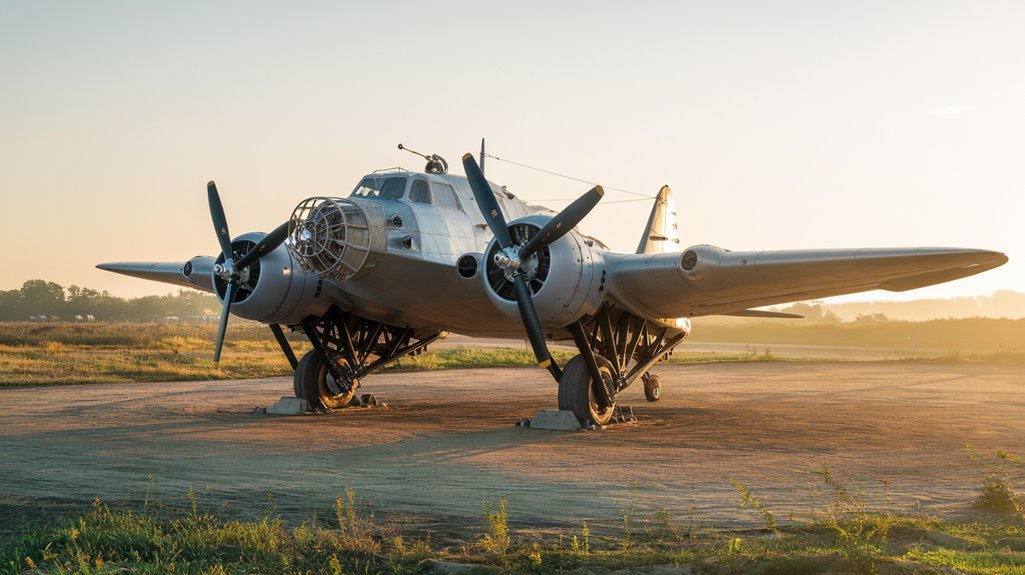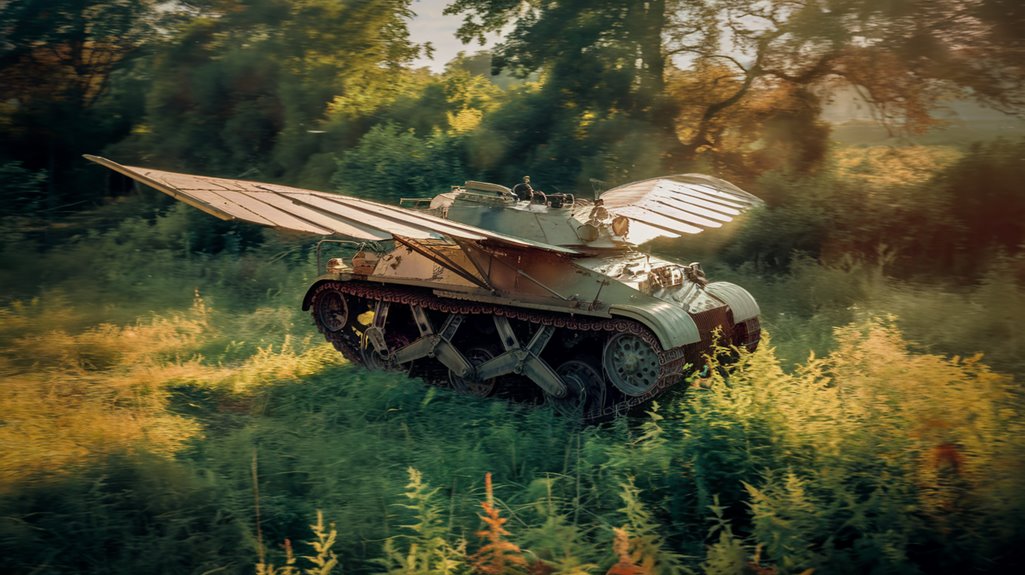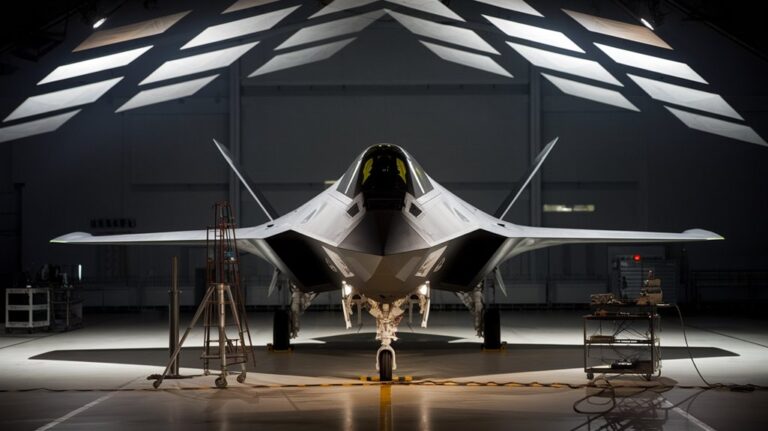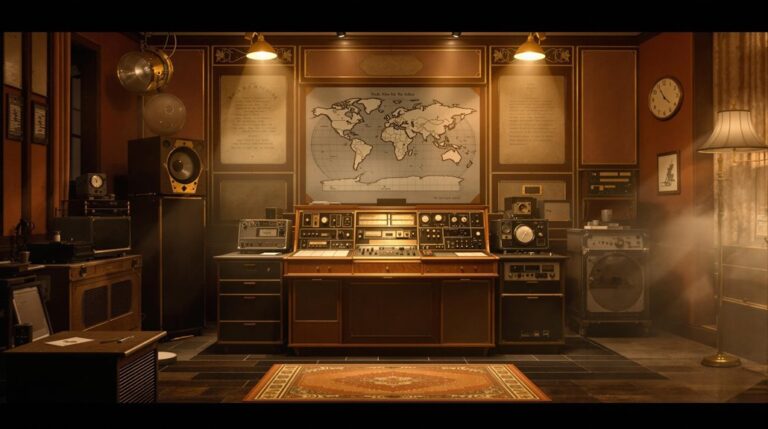The Flying Tank: Military Fantasy or Near Reality?
You've probably dismissed the idea of a flying tank as pure science fiction, but you'd be surprised how close military engineers have come to making this concept work. From the Soviet Union's ambitious A-40 project to today's advanced aerial combat vehicles, the line between fantasy and reality continues to blur. As modern warfare evolves and technology advances, the dream of armored flight isn't just surviving—it's transforming into something far more practical than anyone imagined.
The Dreams of Airborne Armor
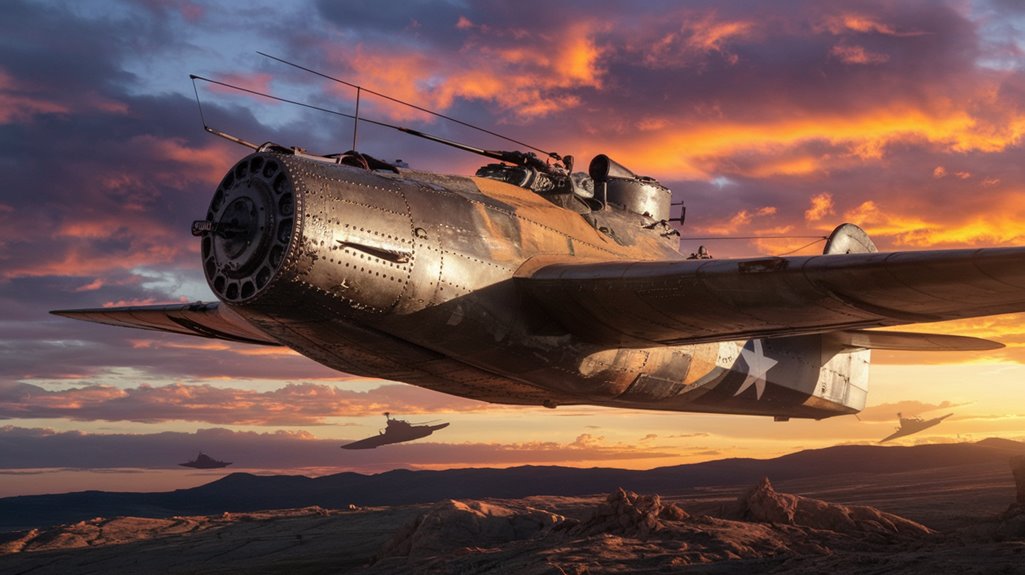
The concept of airborne armor has captivated military strategists since the earliest days of mechanized warfare, evolving from a seemingly impossible dream to today's tangible reality.
You'll find that what started with experimental LAV drops in the 1980s and 1990s has transformed into sophisticated airborne capabilities, as demonstrated by the 3rd Infantry Division's groundbreaking 2023 initiative.
The unit's proven mobility includes the ability to transport four LAVs per single C-17 aircraft.
Now, you can witness a remarkable advancement in tactical advantages through specially modified tanks designed for high-altitude drops. The unit's commitment to innovation is evident through their recent Dragons Lair competition success.
The military's vision extends beyond conventional boundaries, with units like the 82nd Airborne Division's reactivated LAV company paving the way.
What once seemed like a far-fetched fantasy has become an operational necessity, addressing modern warfare's demands for rapid deployment and enhanced protection in hard-to-reach territories.
Engineering Battles: From Design to Reality
While creating flying tanks may seem straightforward in concept, transforming these ambitious designs into reality presents complex engineering challenges that demand meticulous attention to detail.
You'll find that aerial warfare requirements clash with traditional tank design, requiring extensive pre-construction engineering studies and careful design analysis. Each component must undergo rigorous testing and meet strict specifications before moving from concept to reality.
Key considerations for flying tank development include:
- Thorough geotechnical investigations to guarantee structural integrity during both ground and air operations
- Detailed engineering documentation addressing unique challenges of dual-purpose vehicles
- Multiple design iterations through charrette meetings to solve complex design challenges
- Complete analysis of systems integration, from propulsion to armor configuration
The path from drawing board to operational vehicle demands years of collaborative effort between military engineers and contractors, following strict project delivery protocols. The typical pre-construction design phase requires approximately two years to complete all necessary technical studies and engineering documentation.
When Tanks Had Wings: Notable Projects
As military engineers tackled design challenges, several visionaries dared to merge tanks with aircraft, leading to remarkable experimental projects throughout the 20th century.
You'll find John Walter Christie's pioneering concepts from the 1930s at the forefront, featuring tanks equipped with biplane wings and propellers. His innovative M1928 tank could reach impressive speeds of 42.5 miles per hour on roads.
Northrop Aircraft contributed to this innovative field with their ship-based VTOL fighter designs, though they never fully materialized into flying tanks.
The most notable among flying tank prototypes was the Soviet Antonov A-40, designed to carry a T-60 light tank through the air. Despite a successful test flight in 1942, the project faced insurmountable challenges with aircraft towing capabilities.
Other nations joined the race for airborne warfare innovation – Japan developed the Ku-Ro, Britain created the Baynes Bat, and the Soviets experimented with various designs like Rafaelyants' BT-2 adaptation.
However, technical limitations ultimately grounded these ambitious dreams of flying tanks.
The Legacy of Failed Innovation
Despite their ultimate failure, experimental flying tank projects left an enduring mark on military innovation that extends far beyond their ambitious origins.
The T-60 light tank served as the foundation for these early experiments, demonstrating both the limitations and possibilities of combining ground and air capabilities. While these failed concepts might seem laughable today, they've taught valuable innovation lessons that you'll recognize in modern military development. Like many science fiction predictions, these ambitious designs failed to accurately predict future warfare capabilities. The A-40's shortcomings led directly to more practical solutions, including air-dropped tanks and the successful BMD family of vehicles.
- The shift from flying tanks to air-dropped vehicles showed how failed ideas can inspire practical solutions
- Modern autonomous systems and AI development build upon lessons learned from past experimental projects
- Science fiction and FICINT continue to shape military planning, just as speculative designs did in the 1940s
- The BMD family of air-droppable tanks represents the realistic evolution of the flying tank concept
Modern Solutions in Military Mobility
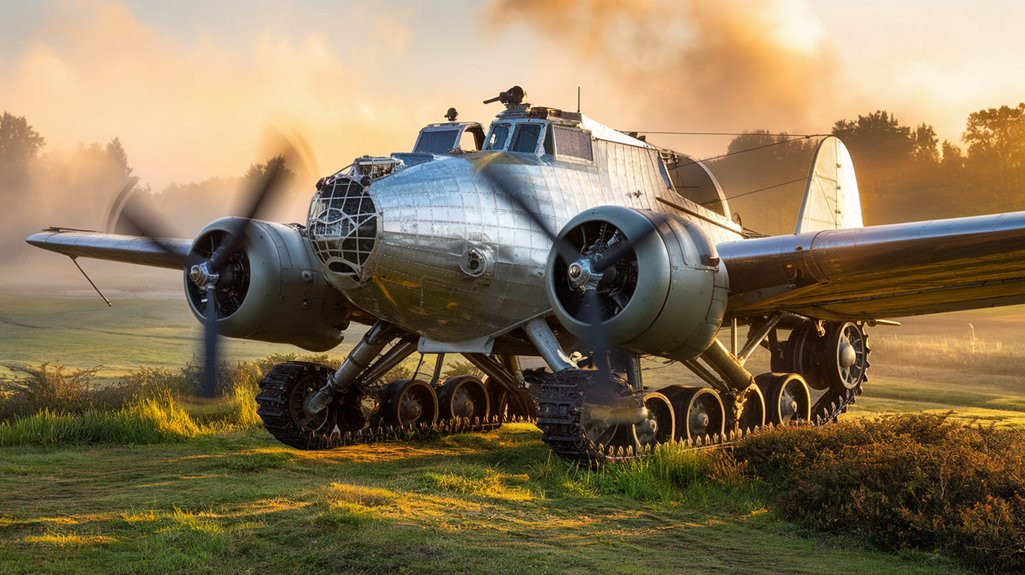
Since the abandonment of flying tank concepts, military mobility has evolved into sophisticated digital and autonomous solutions you'd more likely find in a modern sci-fi film.
Today's tactical innovations focus on ruggedized devices, wearable tech, and autonomous systems that enhance battlefield effectiveness without defying physics. The military's investment in helmet-mounted radar allows troops to detect threats through solid barriers.
You'll find mobility advancements in every aspect of modern military operations, from helmet-mounted displays providing 360-degree vision to hybrid electric vehicles offering instant torque and reduced fuel dependency. The integration of secure 5G networks has revolutionized aircraft diagnostics and inventory management, eliminating paper-based systems in cockpits.
Virtual reality now allows troops to train in simulated environments, while augmented reality overlays essential battlefield data onto real-world scenarios.
These practical solutions represent a shift from ambitious mechanical dreams to digital integration, proving that sometimes the most effective innovations aren't about reinventing the wheel, but enhancing existing capabilities through technology.

